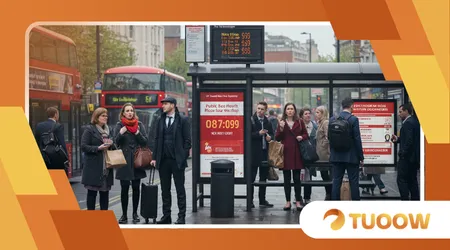Public Transport Price Hike: How It Will Affect Commuters

Public transport price hike concerns are rippling across the UK as commuters brace for increased fares in 2025.
With the government announcing significant investments in transport infrastructure, such as £15 billion for tram, train, and bus projects in regions like the Midlands and North, the cost of daily travel is climbing.
This shift, while aimed at improving services, places a heavy burden on workers, students, and families reliant on buses, trains, and trams.
Why should commuters bear the cost of upgrades they may not see for years? This article explores the real-world impacts of rising fares, blending hard data with human stories to reveal what’s at stake.
The economic backdrop is grim. Inflation, though cooling slightly, still pressures household budgets, and transport costs are a significant chunk of daily expenses.
The public transport price hike ties directly to funding models that prioritize long-term projects over immediate affordability.
For instance, the extension of the £3 bus fare cap until March 2027 offers some relief, but it’s a temporary fix against a broader trend of rising costs.
Commuters in cities like Leeds and Manchester face uncertainty as fares creep up, while rural areas grapple with service cuts.
This piece unpacks the ripple effects, from financial strain to lifestyle changes, and questions whether the government’s vision aligns with commuters’ realities.
The Financial Squeeze on Commuters
Rising fares hit hardest those who can least afford them. A public transport price hike adds pressure to low-income workers commuting daily.
For example, Sarah, a Manchester-based retail assistant, spends £60 monthly on bus passes. A 10% fare increase could force her to cut other essentials.
The Department for Transport faces a 5% annual budget cut, limiting funds for fare subsidies. This pushes operators to raise prices to cover costs. Commuters like Sarah face tough choices: skip meals or walk miles?
++ How to Move to the UK: A Step-by-Step Guide
Data from the Campaign for Better Transport shows four in ten council wards lack adequate bus services. This compounds the public transport price hike’s impact, especially in rural areas. Limited options mean higher costs for fewer routes.
Students, too, feel the pinch. Take Jamal, a Leeds university student commuting by train.
A fare hike could push him to online classes, reducing campus engagement. Financial strain reshapes lives quietly but profoundly.
The government’s £15 billion transport pledge sounds grand, but spades won’t hit the ground until 2028. Until then, commuters face immediate cost hikes without visible improvements. It’s a bitter pill to swallow.

Regional Disparities in Fare Increases
Not all regions face the public transport price hike equally. London secures multi-year funding for TfL, yet lacks new infrastructure investment. Meanwhile, northern cities like Leeds gain tram promises but no fare relief.
Rural areas suffer most. Cllr Peter Thornton notes urban areas receive double the per capita transport funding. Rural commuters, reliant on sparse buses, face steep fare jumps with dwindling services.
Consider the North’s £140 billion transport investment gap over a decade. This historical underfunding means today’s public transport price hike hits harder where infrastructure is weakest. Rural routes vanish, stranding residents.
Also read: New Immigration Rules Explained: What’s Changing This Month
In contrast, cities like Sheffield benefit from tram network renewals. Urban commuters may see long-term gains, but fare hikes still sting now. The divide grows starkly visible.
Take Anna, a Cumbrian nurse. Her village’s bus service dropped to twice daily. A fare increase forces her to consider driving, despite high fuel costs. Regional inequity fuels frustration.
The Ripple Effect on Daily Life
A public transport price hike reshapes how people live and work. Commuters may relocate closer to jobs, upending family life. Others switch to costlier private transport, straining budgets further.
For small businesses, higher fares mean fewer customers. A Leeds café owner reports declining foot traffic as commuters cut non-essential spending. The public transport price hike stifles local economies indirectly.
Social isolation is another casualty. Elderly passengers, like Margaret in Yorkshire, skip community events when bus fares rise. Public transport isn’t just mobility it’s connection.
Read more: Parliament News: Key Bills Being Debated in June
Work-from-home trends don’t solve everything. Not all jobs allow remote work, and connectivity issues in rural areas limit options. Fare hikes push some toward unemployment.
Imagine public transport as a bloodstream, carrying people to opportunities. A public transport price hike clogs this flow, leaving communities anemic. The effects ripple far beyond wallets.
Environmental and Social Consequences
Higher fares could undermine green goals. As public transport price hike pushes commuters to cars, carbon emissions rise. The UK’s net-zero targets face a hidden threat.
Buses and trains are lifelines for low-income groups. Fare increases risk excluding them from jobs and services. Social equity takes a hit when mobility becomes a luxury.
The Campaign for Better Transport estimates £1 billion more annually could restore bus services. Without it, fare hikes deepen inequality, especially in underserved regions.
Young people face barriers, too. A Bristol student skips extracurriculars due to train fare costs. Education and opportunity suffer when transport becomes unaffordable.
Ironically, fare hikes fund green projects like trams, yet deter usage. It’s like charging more for healthy food while promoting nutrition—access remains the real challenge.
Policy Missteps and Public Trust
The public transport price hike reflects deeper policy flaws. Short-term budget cuts clash with long-term infrastructure goals, leaving commuters caught in the middle. Trust erodes fast.
Rachel Reeves’ £15 billion transport pledge is promising, but delays until 2030 frustrate users. Commuters want results now, not promises for future trams. Transparency is key.
Public backlash grows when fares rise without service improvements. A Leeds commuter vents, “Why pay more for late buses?” Reliability must match price increases.
Historical underinvestment, like the North’s £140 billion gap, fuels skepticism. Commuters doubt new funds will deliver. Clear timelines and accountability could rebuild confidence.
Engaging communities in transport planning is vital. Without input, fare hikes feel like top-down burdens. Listening to commuters could align policies with real needs.
Table: Impact of Public Transport Fare Increases (2025)
| Region | Average Fare Increase | Service Change | Commuter Impact |
|---|---|---|---|
| London | 7% | Stable TfL services | Higher costs, no new infrastructure |
| North England | 10% | Planned tram expansions | Immediate cost hikes, delayed benefits |
| Rural Areas | 12% | Reduced bus routes | Increased isolation, limited mobility |
| West Yorkshire | 8% | £2.1bn transport pledge | Higher fares, long wait for trams |
Looking Ahead: Solutions and Alternatives
Addressing the public transport price hike demands creativity. Subsidies for low-income commuters could ease the burden. Targeted fare caps deserve exploration.
Community-driven solutions, like carpool programs, could supplement public transport. Rural areas especially need innovative fixes to bridge service gaps.
Technology offers hope. Digital ticketing systems, as seen in Pune’s fare restructuring, streamline costs. The UK could adopt similar efficiency measures.
Public-private partnerships might fund service expansions without fare spikes. Collaboration could balance affordability with infrastructure growth.
Ultimately, commuters need a voice. Public forums and surveys can shape fairer policies. Listening ensures the next public transport price hike doesn’t blindside users.
Frequently Asked Questions
1. Why are public transport fares increasing in 2025?
Fares are rising to fund infrastructure projects and offset Department for Transport budget cuts, though improvements may take years.
2. How can commuters cope with higher fares?
Budgeting, carpooling, or exploring discounted passes can help. Check local councils for subsidized travel schemes.
3. Will fare hikes improve services?
Not immediately. Projects like trams in Leeds are slated for 2030, leaving commuters paying more now without instant benefits.
4. Are there alternatives to public transport?
Cycling, walking, or car-sharing are options, though less viable in rural areas with sparse services.
5. How can I voice concerns about fare hikes?
Contact local MPs, join commuter forums, or participate in public consultations to influence transport policy.
